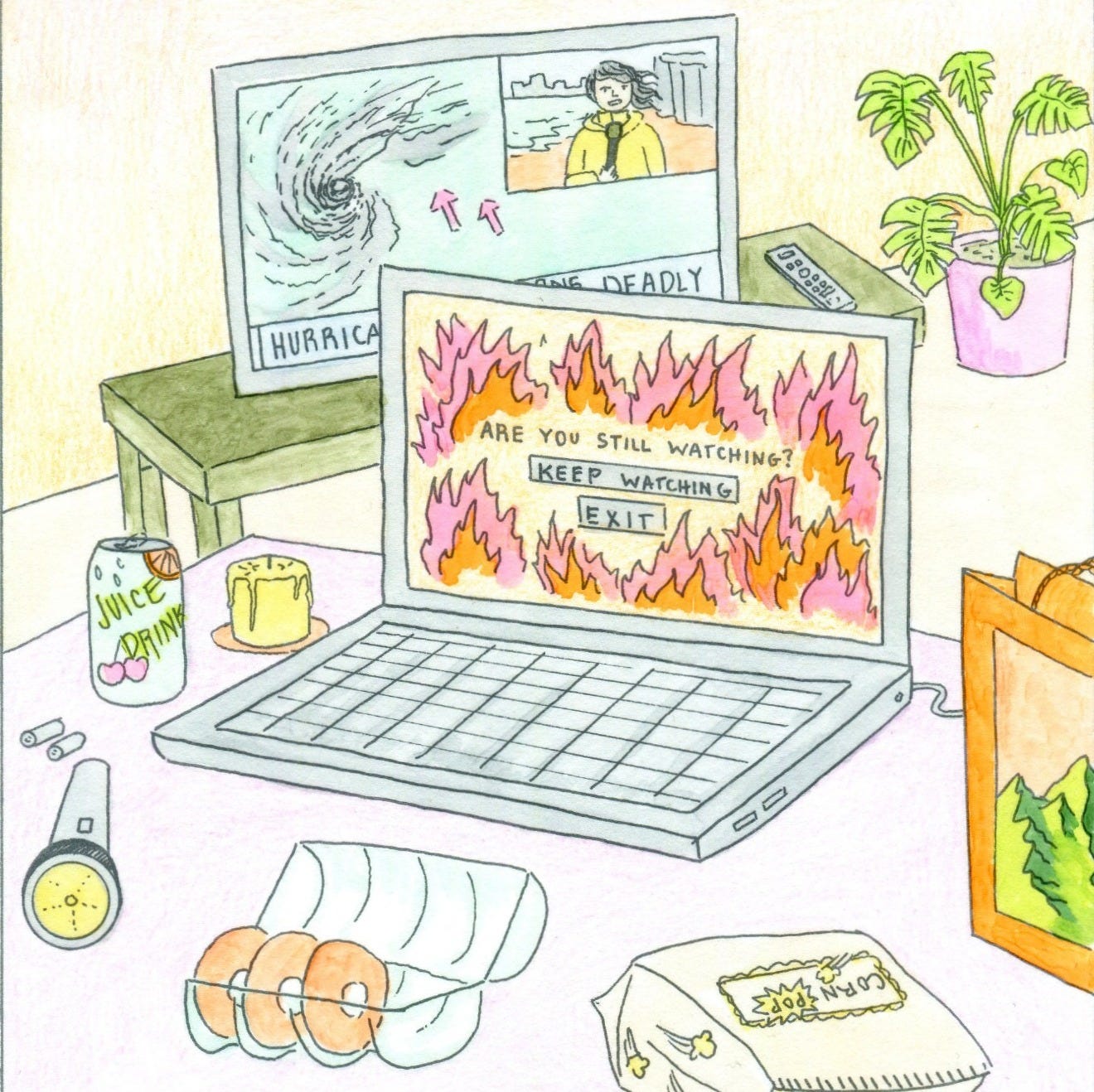“When the fire grabbed his body, it didn't happen by degrees.
There was no burst of heat before,
or giant wave of smothering smoke
and the feeling of a spare room one wants to escape to.
The fire held him at once
—there are no metaphors for this—
it peeled off his clothes
cleaved to his flesh.
The skin nerves were the first to be touched.
The hair was consumed.
"God! They are burning!" he shouted.
And that is all he could do in self-defense.
The flesh was already burning between the shack's boards
that fed the fire in the first stage.
There was already no consciousness in him.
The fire burning his flesh
numbed his sense of future
and the memories of his family
and he had no more ties to his childhood
and he didn't ask for revenge, salvation,
or to see the dawn of the next day.
He just wanted to stop burning.
But his body supported the conflagration
and he was as if bound and fettered,
and of that too he did not think.
And he continued to burn by the power of his body
made of hair and wax and tendons.
And he burned a long time.
And from his throat inhuman voices issued
for many of his human functions had already ceased,
except for the pain the nerves transmitted
in electric impulses
to the pain center in the brain,
and that didn't last longer than a day.
And it was good that his soul was freed that day
because he deserved to rest.”
“They made you a dress glowing like an ember,
burning like coals...I'm not wearing a dress at all, what's burning is me.”
- Dahlia Ravikovitch in The Tale of the Arab Who Died by Fire (1982) & A Dress of Fire (1976)
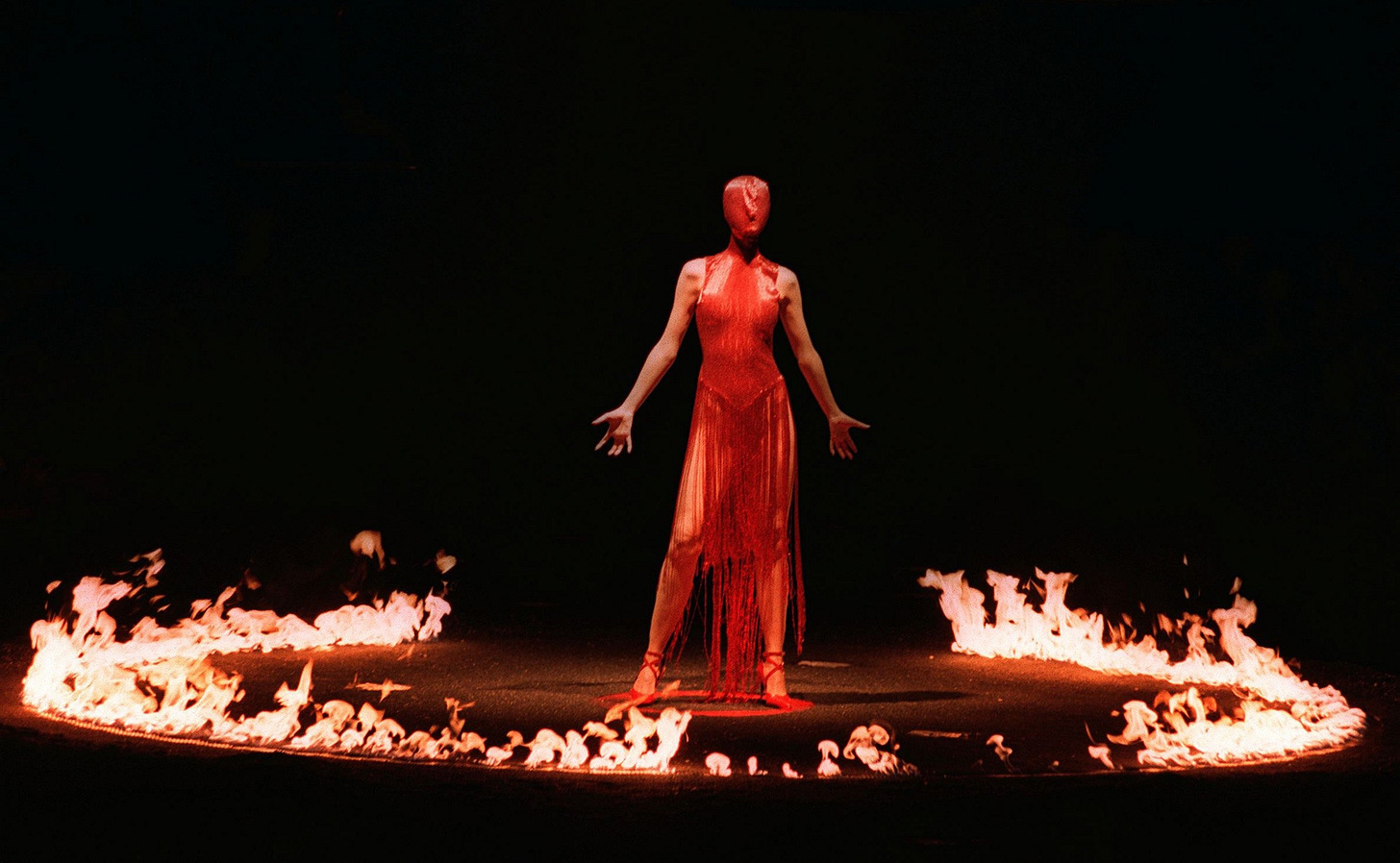
SCENT
Nar is an artisan perfume with notes of cedarwood & burning embers inspired by the song حبك نار Your Love is Fire. I’ve been a fan of Dana El Masri’s work at Jazmin Sarai for years. The scents are a synaesthetic blend of her Egyptian-Lebanese olfactory cultures and contemporary music including Sade, Fairuz, M.IA., Led Zepellin, and Otis Redding. You can try out different aromas with her mixtape sample set.
Dana has written about the insidiousness of orientalism within the fragrance industry. I’d recommend checking out her podcast On The Nose about aromatic heritage, memory, and the political nature of scent. Below I’ve included her conversation with Tanaïs, another perfumer I adore.
SIGHT


Rogelio Escobar is a social provocateur within the Guatemalan fashion industry. This coat is one of my most prized possessions. When I think of fire, burning at the stake, or self inflicted wounds, I recall this piece, the atmospheric song heard on the runway, and the concepts that inspired Rogelio to create it:
‘JPG is an image compression algorithm with loss. This means that every time we edit the image, it is compressed (it looses pixels), and when we save it again, we do not get exactly the same image we had before. The collection is based on the concept that the JPG image format is the most human, because like this format, in the search for improvement, we lose our original integrity in the process. The starting point of the collection was classic haute couture silhouettes, which were taken through a process of deconstruction to give them the appearance that certain parts were removed or digitally altered, in order to expose and modify the body, revealing a beauty more humane and vulnerable, through a transformation similar to the one we experience as people every day, losing and deforming parts of ourselves in search of evolution, becoming increasingly complex and interesting with each traumatic experience we live.
Our human condition cannot find improvement without destruction, since it is impossible to grow and prosper if we avoid sacrifice and suffering, especially in the local culture, in which it seems that suffering is an essential part of our daily life, living with the pressure that we as latinos have to fit within European canons of beauty and aesthetics, and the difficulties we face to achieve our dreams, conditioned to the shortcomings of the third world. What we see as self-improvement is really a process of controlled self-destruction, in which we give up certain parts of ourselves, in search of happiness through the ideals that move the world: beauty, money, love, sex, power, and glory.
The prints made in collaboration with Manny Rionda, cover the garments with flowers in different states of destruction, representing our human fragility and inevitable damage. In contrast, the prints of erotic torture devices, and the jewelry made in collaboration with Rosé Rosá, represent human strength and tenacity, and the way we wear our pain and traumatic experiences as medals of honor and distinction.’
What lives on after destruction and trauma? What does it take to evolve to survive a fire? I’m turning my gaze toward dormant seeds that bloom in disturbed soil and flowers fossilized in charcoal:

If you’re looking for how to navigate a world on fire, I’ve got my eyes on these upcoming books: From the Ashes by Sarah Jaffe (on the revolutionary power of grief), Hot Shot by River Selby (a firefighter’s memoir about colonization & fire suppression), and Endsickness by Sofia Alarcon (humorous comics about climate dystopias and existential anxieties).
SOUND
“In the deepest, oldest caverns of human memory, a fire burns... and that fire has been with human beings since the very beginning. Scientists now say that the human relationship with fire goes back over 1.5 million years. And so — fire has played a profound role in shaping human bodies and human consciousness in ways we're often unaware of. For fire... changed everything. It took us out of the immediacy of the animal experience and gave us a focal point, a place to gather and tell stories, to ideate, and to dream. And because fire created for us a perpetual hearth in the midst of shifting seasons, fire also gives us the ability to pause and plan ahead. Forethought, in many traditions, is a gift of fire, as is ritual. Our ancestors recognized the universe itself as lit by a great cosmic fire and recognized that same fire present within themselves. So ritual practice — often centered around fire — reflects and enacts the transformative friction of the cosmos. And practitioners heat themselves through repetitive dance, drumming, rattling, singing in order to participate in a primal alchemy, a transformative process that is not possible without the heat of fire. The spiritual promise of fire is in the transformation it brings, in how it burns away dross and reduces old patterns to ashes and regenerates us anew. Yet fire has another side too. The very thing that warms and nourishes us, that cooks our food and provides the spark for our ideas can also... burn us. In dozens upon dozens of cultures, fire is brought to human beings by a trickster, and the gift of fire has consequences too. For, poorly tended, fire can burn out of control. Today, in a world inflamed, a world of conflict driven by obsessive hungers and enacted through incendiary discourse and weapons of fire, we can see clearly that there is a fire imbalance on planet earth. What is called for in such times?“ - Joshua Schrei
TASTE
If winter is approaching in your hemisphere, I’d gently suggest fire cider which is an herbal vinegar used as an immune system booster and decongestant to ward off colds and flus. I personally enjoy this one from Serenus Community Herbs (although you can make your own). The store is currently closed because the owner Sunday is getting surgery but they’re still offering free packages to black & indigenous folks through their herb bank.
The trans, disabled, bipoc care worker is currently raising funds to purchase Moonpence Farm, the herb & flower farm they reside on with their family. Please consider contributing to their fundraiser or click here for other ways to support them.

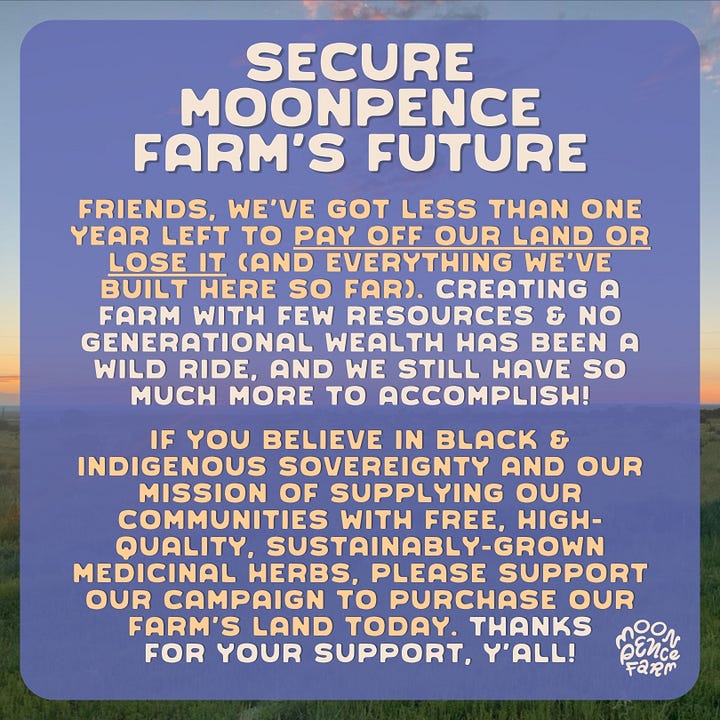
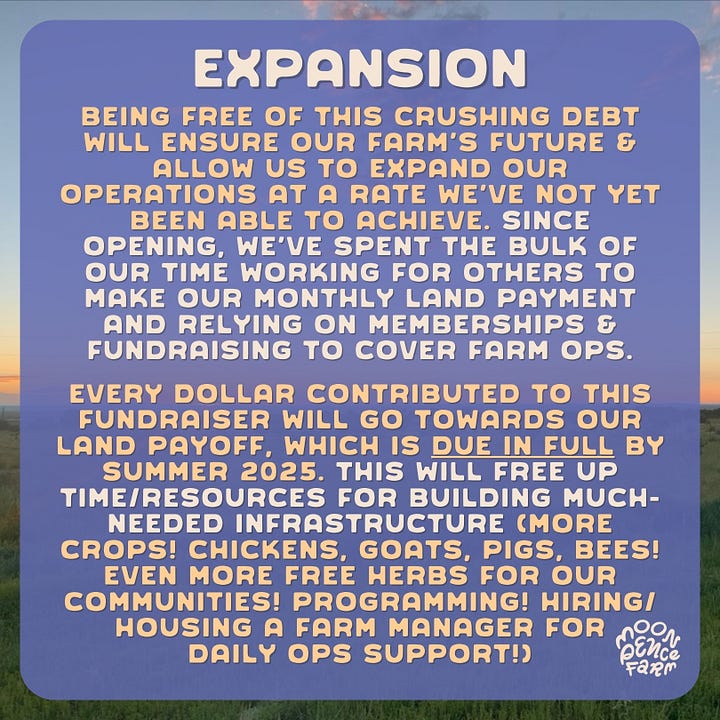
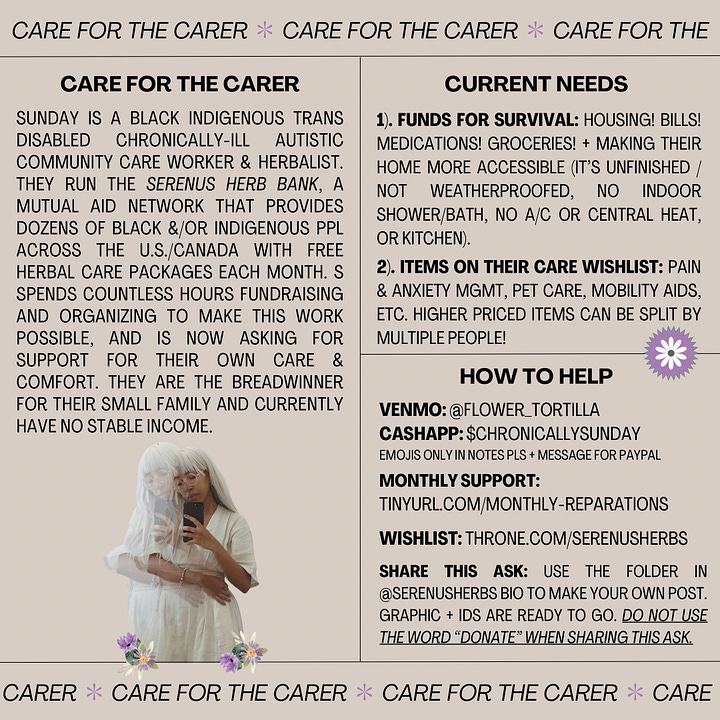
TOUCH
Earlier this year I began to learn arabic calligraphy under Aiyah Sibay (which I’ll share more about in a future post). I loved the tactile relationship with the materials used: a handmade bamboo or reed pen, silk threads, and lamp black ink. Lately, I’ve been curious about making my own ink from ash which I learned was possible via this newsletter:
‘there is a color that comes from fire, born of it. It might be our oldest color, the first one we made —by burning bones, wood, vines, fat, etc.— It’s lamp black…a dark made from light, a blackness from flame…There’s a dualism present: the flame, the residue. With every candle, every lamp, there is always both the light and the soot, the bright and the dark, the heat and the cold…It was how we first drew, how we first wrote, how we first made our marks on the world. The thievery of fire was never just about the heat and its possibilities; it was also about the soot and its velvety, quiet qualities, its delicious dark heart.’
I’m currently learning how to use natural dyes on fabric and I’m tempted to go down the rabbit hole of Joumana Medlej’s research on recreating colorful inks & paints from the golden age of the Islamic world, the historical dyeing methods of Palestinian embroidery, and talismanic inkmaking.





